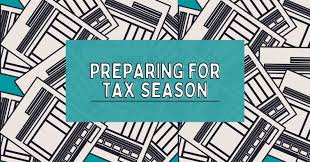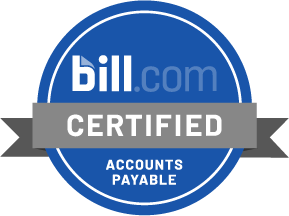A Comprehensive Guide to Preparing for Your Tax Return
1/19/20258 min leer


Understanding the Importance of Tax Preparation
Tax preparation plays a crucial role in the overall financial health of both individuals and businesses. When individuals take the time to prepare their tax returns, they can unlock a multitude of benefits that often go unnoticed. One of the primary advantages of thorough tax preparation is the elimination of missed deductions. Many taxpayers are unaware of the various deductions available to them; hence, they often overlook opportunities to reduce their taxable income. By organizing financial records and understanding eligible deductions, taxpayers can ensure they are not leaving money on the table.
Moreover, effectively preparing for tax filing has a direct impact on reducing audit risks. The Internal Revenue Service (IRS) is more likely to scrutinize returns that are incomplete or disorganized. By maintaining comprehensive documentation and correctly reporting all income, individuals can substantially lower their chances of being flagged for an audit. This proactive approach not only saves time but also alleviates the stress that comes with potential audit inquiries.
Maximizing potential refunds is another significant benefit derived from careful tax preparation. Taxpayers who diligently organize their financial activities throughout the year tend to have a clearer picture of their overall financial situation. This awareness allows them to potentially uncover hidden credits and deductions that can augment their refund. Ultimately, receiving a larger refund can provide financial relief, hence enabling taxpayers to allocate these funds toward important expenses such as savings, investments, or debt repayment.
Lastly, the peace of mind associated with being well-prepared for tax season cannot be overstated. Knowing that one has taken the necessary steps to ensure a smooth filing process contributes to lower stress levels as the deadline approaches. This level of preparedness fosters confidence in handling one’s financial obligations, making tax season a far less daunting experience.
Gathering Necessary Documents
Preparing for your tax return requires careful organization and gathering of essential documents. Having all the necessary paperwork at hand can streamline the filing process and ensure accuracy in your submission. Begin with income statements, such as W-2 forms provided by your employer, which detail your wages and withheld taxes. If you have other sources of income, such as freelance work or investments, you will also need to gather 1099 forms that reflect these earnings.
It is crucial to maintain a comprehensive checklist of receipts for any deductible expenses. These can include business-related costs, medical expenses, and charitable contributions. Each receipt serves as proof of spending and may significantly reduce your taxable income. Additionally, or if you own a home, documents related to mortgage interest and property taxes should be included, as they can also provide valuable deductions.
Previous year's tax returns can be an invaluable resource when preparing your current submission. These records can help in verifying your previous deductions and credits, making it easier to identify any adjustments for the current filing period. Furthermore, if you expect to claim any tax credits, such as the Earned Income Tax Credit or Child Tax Credit, ensure you have the proper documentation that validates your eligibility for these incentives.
Special circumstances, such as significant life changes, may necessitate further documentation. For example, if you moved during the year, filing for unemployment, or welcomed a new dependent, keep all relevant paperwork organized. Being thorough in gathering these documents will contribute to a smoother and more efficient tax filing experience.
Choosing the Right Tax Filing Method
When it comes to filing taxes, individuals face a crucial decision regarding the method they will use. There are several avenues available, each offering distinct advantages and drawbacks that cater to different needs and preferences. Understanding these options is essential in making an informed choice for your tax preparation.
One popular method is do-it-yourself (DIY) tax filing, often facilitated by tax software. These programs provide users with step-by-step guidance, making it easier to navigate the complexities of the tax system. DIY approaches are typically less expensive than hiring a professional, and they can be particularly beneficial for individuals with straightforward tax situations, such as those filing basic returns without major deductions. However, this method requires a degree of comfort with numbers and tax-related concepts, which may not be suitable for everyone.
On the other hand, hiring a professional tax preparer offers a more hands-off experience. Professionals possess the knowledge and expertise to handle various tax scenarios, including complex filings and specific deductions. Their experience can be invaluable, especially for individuals with unique financial circumstances, such as self-employed individuals or those with significant investments. Nonetheless, this method comes at a higher cost, and it is important to choose a reputable professional to ensure accurate and compliant tax filing.
Additionally, the Internal Revenue Service (IRS) provides a number of resources that can aid in the tax filing process. These resources include online tools, publications, and free tax preparation services for qualifying individuals. Utilizing IRS resources can enhance one's understanding of the tax code and assist in making the right choice regarding filing methods.
Ultimately, the decision on which tax filing method to utilize should be grounded in one’s financial situation, comfort with tax preparation, and the complexity of the individual’s tax return. Thorough consideration of all available options will ensure a smoother tax filing experience.
Understanding Tax Deductions and Credits
Tax deductions and credits play a significant role in reducing the overall tax liability of individuals and families. Understanding these components is crucial for taxpayers seeking to optimize their tax returns. Tax deductions lower your taxable income, meaning they can reduce the amount of income that is subject to taxation. Common deductions include those for mortgage interest, medical expenses, and charitable contributions. For instance, homeowners can generally deduct the interest paid on their mortgage, which can lead to substantial savings, especially in the initial years of the mortgage when interest payments are typically higher.
Medical expenses also offer a deduction opportunity; however, it is essential to note that only the expenses exceeding a certain percentage of your adjusted gross income (AGI) can be deducted. Taxpayers should maintain detailed records of their medical expenditures to accurately calculate this deduction. Additionally, state and local tax payments, including property taxes, can be deducted, although they are subject to limits, which various taxpayers should consider when filing their returns.
On the other hand, tax credits directly reduce the amount of tax owed, making them even more valuable than deductions. One of the most prominent examples is the Earned Income Tax Credit (EITC), designed to benefit low- to moderate-income earners. Depending on income level and number of qualifying children, the credit can significantly reduce tax liability or even result in a refund, enhancing financial stability for eligible individuals. Other credits include education-related credits, which support taxpayers pursuing higher education or paying tuition for dependents.
Therefore, it is essential for individuals to familiarize themselves with both tax deductions and credits available to them. Doing so may have a substantial impact on their overall tax situation, encouraging proactive engagement with tax planning strategies. Understanding these financial tools ultimately aids taxpayers not only in their current fiscal year but throughout their financial journeys.
Important Tax Deadlines to Keep in Mind
Understanding the key tax deadlines for the current tax year is crucial for all taxpayers. Adhering to these dates not only allows for a smooth filing process but also helps in avoiding potential penalties and interest that may accumulate due to late submissions. The Internal Revenue Service (IRS) establishes distinct deadlines for various tax-related activities, and being aware of these deadlines will facilitate better financial planning for individuals and businesses alike.
For the fiscal year 2023, the primary deadline for filing individual tax returns is April 15, 2024. If this date falls on a weekend or holiday, taxpayers should anticipate that the deadline may shift to the following business day. For those who require additional time, filing for an extension is an option. Taxpayers can request a six-month extension by submitting Form 4868, which essentially pushes the deadline to October 15, 2024. It is important to note, however, that while this extension permits a delay in filing, any taxes owed are still due by the original deadline to avoid interest and penalties.
Business owners also have specific deadlines to adhere to, especially if they operate as corporations or partnerships. For corporations, the deadline for filing tax returns is usually March 15, 2024. Partnerships follow a similar deadline, while S Corporations maintain a similar schedule. These entities can also file for an extension, which should be completed by the original deadline of their returns.
Furthermore, estimated tax payments for the self-employed or those with additional sources of income are generally due quarterly. For the current tax year, payment dates typically occur on April 15, June 15, September 15, and January 15 of the following year. Keeping track of these due dates enhances compliance and mitigates financial liabilities associated with late payments.
Tips for Reducing Tax Stress and Anxiety
Tax season often brings about a wave of stress and anxiety for many individuals and families. To foster a more manageable and less overwhelming tax experience, it is essential to implement practical strategies aimed at reducing this type of stress. One effective method is to break down the tax preparation process into smaller, more manageable tasks. By delineating responsibilities, such as gathering documents, reviewing financial statements, or completing tax forms, individuals can create a clear path forward, alleviating the feelings of being daunted by the entire process.
Setting specific deadlines for each task can further facilitate a smoother filing experience. Allocating time for gathering necessary documents like W-2s, 1099s, and receipts not only ensures all materials are organized prior to filing but also creates a structured timeline that can minimize last-minute panic. It is advisable to create a checklist to track progress and ensure that nothing is overlooked, thereby fostering a sense of accomplishment as tasks are completed.
Creating a comfortable work environment is another important aspect of managing tax-related stress. Selecting a quiet space with minimal distractions and having a functional workstation can enhance focus and productivity. Consider personalizing the workspace with calming elements, such as plants or ambient lighting, which can aid in establishing a more pleasant atmosphere. Additionally, utilizing organizational tools such as digital filing systems can streamline the document retrieval process and reduce unnecessary frustration.
Finally, it is important to maintain a healthy mindset throughout this process. Practicing relaxation techniques, such as deep breathing or short breaks for physical activity, can help to mitigate anxiety levels. By employing these tips, individuals can better manage their tax preparation and cultivate a more positive approach to the financial obligations that arise during tax season.
Next Steps After Filing Your Tax Return
After submitting your tax return, it is crucial to stay informed about its status and manage expectations regarding refunds. Most tax authorities provide a way to track the progress of your return through their official website or dedicated apps. This tracking feature can offer insight into whether your return has been processed, whether additional information is required, or when you can expect to receive your refund. It is advisable to check this status periodically, especially during peak tax season when processing times may be longer than usual.
Refunds typically take time to process, but understanding the usual timelines for your specific jurisdiction can help alleviate any concerns. For instance, e-filed returns often lead to quicker refunds compared to paper submissions. If your return is selected for review or audit, be prepared for potential delays. In such instances, maintaining open communication with tax authorities and promptly addressing any requests for additional documentation can expedite the process. Remember, your refund will typically be sent via direct deposit or mailed check, depending on the option you selected during filing.
In addition to tracking your return, it is vital to store tax documents securely. Ensure that all related paperwork, including your filed return, W-2 forms, 1099s, and other supporting documents, are organized and kept for at least three years. Utilizing a dedicated filing system, whether physical or digital, can facilitate easy access for any future audits or reference needs.
Looking ahead to the next tax season, consider maintaining a tax binder throughout the year to compile receipts and documents relevant to potential deductions. Keeping meticulous records will ease the preparation process and may maximize any eligible refunds. Implementing these practices will ultimately contribute to a more streamlined experience when navigating your future tax returns.




